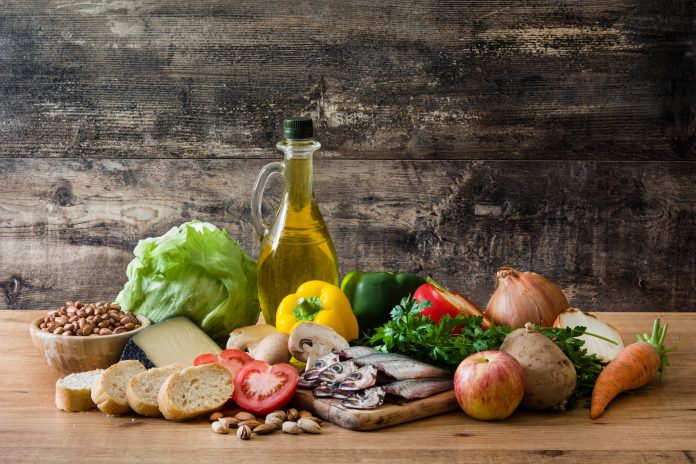Dr Deborah Lee, Dr Fox Online Pharmacy, shares her tips on how to naturally lower your cholesterol levels without using medication
Have you recently been told you’ve got a raised cholesterol level? This can come as a shock.
Having a raised cholesterol is serious as this increases your risk of cardiovascular disease – strokes and heart attacks. However, here’s some good news. There are many things you can do to lower your cholesterol levels and lower these risks.
Read on and find out how to lower your cholesterol levels naturally – without necessarily resorting to medication.
What is cholesterol?
Cholesterol is a type of fat present in your bloodstream. It’s essential for human survival as it has an integral role in the formation of cell walls, is the core component of many hormones, and is involved in the production of vitamin D. Your body obtains cholesterol in two ways – 20% is ingested in the food you eat, and 80% is synthesised in the liver.
Cholesterol is transported around the body attached to proteins called lipoproteins. There are two types –
- High-density lipoprotein (HDL) – This transports cholesterol from the cells in your body to the liver to be broken down and excreted as waste – HDL is ‘good’ cholesterol.
- Low-density lipoprotein (LDL) – This transports cholesterol to all the cells in your body for use in cellular functions. If levels are too high, fatty deposits can build up inside the arteries – LDL is ‘bad’ cholesterol.
There are also other types of fat (lipid) in your blood, called triglycerides.
Why does a raised cholesterol increase the risk of cardiovascular disease?
Having too much cholesterol in your bloodstream leads to fat being deposited within your artery walls, where they form fatty plaques. This is a disease process known as atherosclerosis.
Atherosclerosis damages the artery wall, meaning it is more likely to rupture or become blocked. When this happens, the blood supply to this tissue is cut off, and the tissue, now starved of oxygen, will die.
For example
- A blocked coronary artery leads to the death of heart muscle in a heart attack.
- A blocked cerebral artery leads to the death of brain tissue if you have a stroke.
In fact, atherosclerosis can have many far-reaching consequences including causing blindness, kidney failure, gangrenous limbs, and ruptured aortic aneurysms which are most often fatal.
Raised cholesterol is not the only cause of atherosclerosis – there are other contributory factors, such as raised blood pressure, obesity, and smoking. However, to stay healthy, it’s vital to keep your blood level of cholesterol within normal limits.
What are the normal values for a cholesterol test?
The healthy values for your cholesterol levels are listed below.
| Total cholesterol | – 5 or under |
| HDL cholesterol | – 1 or over |
| LDL cholesterol | – 3 or under |
| Triglycerides | – 2.3 or under |
(Heart UK)
Your doctor will advise you on about how much you should aim for, when trying to lower your cholesterol. Below are listed the main ways you can lower cholesterol without needing medication. Unfortunately, this will not be sufficient for some people, who may still require statins, but much can be achieved by a natural approach.
Ways to lower cholesterol naturally
Eat less saturated fat
You can lower your cholesterol by eating less saturated fat. Saturated fat is found in the following –
- Saturated fats are those fats that are often solid at room temperature. They are present in butter, lard, ghee, cheese, cream, and other full-fat dairy products.
- Processed foods often contain large amounts of saturated fats called trans fats. Examples include pies, pastries, biscuits, and ice cream.
- Red meat contains high levels of saturated fats, including bacon, salami, and sausage.
- Coconut oil, and palm oil are high in saturated fat.
- Fried food, fast food, and prepared microwave meals often contain high levels of saturated fat.
Swap these foods for healthy unsaturated fats – for example, foods cooked in vegetable oil such as olive oil, or sunflower oil. Unsaturated fats are also found in nuts, seeds, and fish.
How to swap unhealthy fats for healthy fats
- Choose to buy foods containing healthy fats such as olive oil, or other unsaturated fats.
- Read the product labels. Green and amber colour codes are used for low and medium saturated fat content.
- What is low fat? – For each 100g of food, low fat is 3 g or less. Low saturated fat is 1.5 g or less.
- What is high fat? – For each 100g of fat, 17.5 g or more is high-fat. 5g or more is high-saturated fat.
- Cook with small amounts of healthy fat such as 1-calorie olive oil cooking spray.
- Boil, bake, steam, or grill, using small amounts of healthy fat only.
- Cut the fat off meat before you cook it and get rid of the skin. Use the best quality, leanest meat you can find. If you use cooking oil from a bottle, measure out your cooking oil so you use no more than a teaspoon.
- Bulk-out recipes with vegetables, beans, and pulses.
- Look for healthy alternatives. You can swap standard chocolate brownies for example for healthy chocolate and avocado brownies, made with avocado instead of butter.
- Use plant-based spreads on bread rather than butter.
- Choose skimmed or semi-skimmed milk, and low-fat yoghurts.
- Avoid high-fat takeaway foods, often containing fatty meat, high-fat cheese, sauces, and fried accompaniments such as chips and fried rice.
- Avoid biscuits, cakes, and chocolates – choose healthy snacks such as fruit and nuts instead.
For more information
Eat more fibre
Fibre may not seem instantly appealing – but research consistently shows that a high fibre diet is good for health.
A large 2018 study published in The Lancet reported findings from 185 studies and 58 clinical trials including 4365 participants. Those who consumed at least 25g of fibre per day had a 15%-30% lower risk of all-cause mortality, and death from cardiovascular disease, type-2 diabetes, and colon cancer. The highest intake of fibre was associated with the lowest systolic blood pressure, body weight, and total cholesterol.
Fibre is a type of undigestible carbohydrate. It plays an important role in the gut as it bulks out the intestinal contents, stimulating the gut wall to propel the food contents along, and preventing constipation. In the small intestine, fibre binds to cholesterol obtained from food and prevents it from being absorbed into the bloodstream. Replacing refined grains with whole grains, which have much higher fibre content, will help lower your cholesterol.
How to add fibre to your diet
Foods that are high in fibre are listed below. Try and incorporate as much as you can of these in your daily diet –
- Whole grains – found in cereal, brown bread, brown rice and brown pasta (avoid white bread, white rice and white flour – so called ‘white foods’). Also, in oats, barley, and rye.
- Fruits – including pears, strawberries, apples, bananas, mangoes, and raspberries.
- Vegetables – including carrots, beetroot, broccoli, and sprouts.
- Legumes – including lentils, chickpeas, kidney beans, and baked beans.
- Nuts and seeds – including almonds, cashews, pistachios, and chia seeds.
- Potatoes – with their jackets on. Most dietary fibre is found in the skin of fruits and vegetables.
You can eat more fibre by –
- Choosing healthy whole grains in cereal, bread, and pasta.
- Opting for healthy snacks such as an apple or a pear instead of a pack of biscuits.
- Adding vegetables to our cooking wherever possible – adding vegetables to soups and casseroles, keep some in the freezer so you don’t run out. Use lentils and beans to thicken dishes too.
- Wash vegetables but leave the skins on when possible.
- Make dips with chickpeas such as humus and eat with raw vegetable sticks.
- Eat nuts as a snack or add chopped nuts to yoghurt and fruit as a dessert.
Lose weight
Weight loss often leads to improvements in your lipid profile. Restricting your calorie intake to lose weight, leads to the breakdown of fat.
For example, one 2016 American study reviewed the data from 401 overweight or obese subjects who participated in a weight loss program between 2003-2011. Those who lost 5 -10% of body weight showed significant reductions in total cholesterol, LDL cholesterol and triglycerides. Those who lost 10% of their body weight showed the greatest improvements in their lipid profile.
How to lower cholesterol by losing weight
It can be confusing as there are so many weight-loss diets to choose from, but the key to success is to realise that changing your diet to lose weight needs to be a permanent way of life, not just following a fad diet for a few weeks. One option is the Mediterranean Diet.
Medical studies have shown that following the Mediterranean Diet will reduce LDL cholesterol by 10% and raise HDL cholesterol by 5%. Some studies also show reductions in triglycerides and total cholesterol.
The Mediterranean Diet is a well balanced, varied, nutritious, delicious diet, full of fresh fruit and vegetables, lean meat, fish, healthy unsaturated fats, nuts, and seeds. In studies of those who are obese, following the Mediterranean Diet has been shown to lower BMI and reduce visceral fat.
Do more exercise
Aerobic exercise stimulates the transport of LDL cholesterol to the liver, where it is broken down and excreted in the bile. In addition, exercise reduces the number of very small LDL particles, meaning less cholesterol is able to get inside the lining of your arterial walls.
In general, the more exercise you do, the better this effect. Exercise can also increase HDL cholesterol.
How to lower cholesterol by increasing exercise
Take 30 minutes, 5 x per week of moderate-intensity exercise.
Adding in resistance training will have added benefits.
Moderate-intensity exercise is any exercise that makes you feel a little sweaty and slightly out of breath, for example, brisk walking, jogging, or cycling. Anyone can step outside for a brisk walk – there is no necessity to join an expensive gym. Just open the door and set off – time to get walking!
How to incorporate more walking into your routine and lower cholesterol
- Make exercise part of your normal routine. Ditch the car, and walk, cycle, or take public transport, when you can.
- If you need to drive, park further away and walk a bit further to your final destination.
- Don’t sit at the computer for hours on end – get up once an hour and move, for example, go up and down the stairs 10 times.
- Have meetings standing up. When you take phone calls, stand up and walk up and down instead of sitting still.
- Walk in your lunch break – don’t just sit at your desk or on the sofa.
- Take 2 or 3 short walks per day, maybe 10 minutes before breakfast, lunch, and dinner.
- Join up with a friend for a walk, or maybe join a walking group. Make walking fun.
- Sign up for a walking charitable event and get in training.
- Walk a dog.
- Get a pedometer and aim for a minimum of 10,000 steps per day.
Stop smoking
Smoking is well known to cause an abnormal lipid profile due to the complex effects of nicotine on metabolism.
Stopping smoking greatly improves your lipid profile, and specifically leads to significant increases in levels of HDL cholesterol.
How to lower cholesterol by stopping smoking
There’s never been a better time to stop smoking. This is the very best thing you can do for your health. You are three times more likely to succeed if you seek help rather than going it alone.
Contact NHS Smokefree for free help and advice. Have you heard about varenicline (Champix) a drug that blocks nicotine cravings and has helped many people to kick the habit for good? Why not make enquiries today?
It’s National No Smoking Day on March 10th. Put the date in your diary and get started? Make 2021 the year you quit for good – and raised your cholesterol!
Final thoughts
You can have a major influence on your cholesterol just by adopting a healthy lifestyle. Your body is very finely tuned – all these factors such as weight, exercise, blood pressure and smoking – are all interrelated. If your cholesterol is elevated and you want to do something about it, try following the advice in this post.
Don’t try and do too much at once – take things one step at a time. In 12-months you will have come a long way!
For more information
- Heart UK – Understanding Cholesterol








